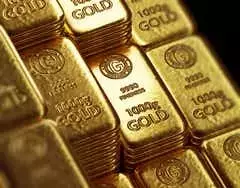The recent U.S. presidential election has sent shockwaves through the precious metals market, with gold futures experiencing a significant decline over the past four consecutive sessions. This shift in market dynamics has raised questions about the future trajectory of gold and other precious metals, as investors grapple with the implications of a new political landscape.
Unlocking the Secrets of the Precious Metals Market in the Post-Election Era
The Surge of the U.S. Dollar and Treasuries
The victory of Donald Trump in the U.S. presidential election has had a profound impact on the precious metals market. The strengthening of the U.S. dollar and the rise in Treasury yields have reduced the appeal of non-yielding safe-haven assets like gold. Investors have been drawn to the potential for higher returns in the U.S. financial markets, leading to a shift in capital allocation away from traditional safe-haven investments.This shift in market sentiment has been further exacerbated by the expectation of a more business-friendly policy environment under the new administration. Investors are anticipating a potential increase in infrastructure spending, tax cuts, and deregulation, which could fuel economic growth and reduce the demand for safe-haven assets.The Changing Dynamics of the Precious Metals Landscape
The post-election landscape has also brought about a shift in the relative performance of different precious metals. While gold has experienced a significant decline, other precious metals, such as silver, have shown more resilience. The Global X Silver Miners ETF (SIL), for instance, has managed to maintain its position, suggesting that investors may be seeking diversification within the precious metals sector.This divergence in performance highlights the need for a more nuanced understanding of the factors driving the precious metals market. Factors such as industrial demand, geopolitical tensions, and the overall macroeconomic environment can all play a role in shaping the relative performance of different precious metals.Navigating the Uncertainty: Strategies for Investors
In the face of this shifting landscape, investors must carefully evaluate their investment strategies and adapt to the changing market conditions. While the short-term outlook for gold may appear bearish, the long-term fundamentals of the precious metals market remain intact.Diversification across different precious metals and asset classes can be a prudent approach, as it can help mitigate the risks associated with the volatility of the precious metals market. Additionally, investors may want to consider actively managed funds or strategies that can navigate the complexities of the post-election landscape.Furthermore, it is crucial for investors to stay informed about the latest developments in the precious metals market, including changes in monetary policies, geopolitical events, and industry trends. By staying ahead of the curve, investors can position themselves to capitalize on the opportunities that may arise in the ever-evolving precious metals landscape.The Broader Implications: Ripple Effects Across the Financial Landscape
The shifts in the precious metals market have broader implications for the overall financial landscape. The performance of precious metals can have a significant impact on the investment decisions of institutional and retail investors alike, as they seek to balance their portfolios and manage risk.Moreover, the performance of the precious metals market can also influence the broader economic and political landscape. For instance, a sustained decline in gold prices could have implications for the global monetary system, as central banks and governments may need to reevaluate their policies and strategies.As the post-election landscape continues to evolve, it will be crucial for investors, policymakers, and industry stakeholders to closely monitor the developments in the precious metals market and adapt their strategies accordingly. By staying informed and proactive, they can navigate the shifting sands of the precious metals market and capitalize on the opportunities that may arise in the months and years to come.You May Like

